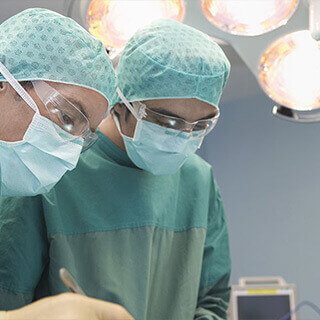Two New Surgical Procedures Relieve Symptoms of Lymphedema
 About 30% of women who have their lymph nodes removed or irradiated as part of their breast cancer treatment develop lymphedema in the arm. Lymphedema swelling can put a serious dent in a patient’s quality of life, causing pain, weakness, and decreased mobility.
About 30% of women who have their lymph nodes removed or irradiated as part of their breast cancer treatment develop lymphedema in the arm. Lymphedema swelling can put a serious dent in a patient’s quality of life, causing pain, weakness, and decreased mobility.
Most lymphedema patients rely on massage, exercise and compression bandages to manage swelling and try to prevent complications. Now two new microsurgical procedures may effectively reduce the fluid build-up and greatly reduce symptoms.
At M. D. Anderson Cancer Center, patients who underwent lymphaticovenular bypass, a minimally invasive procedure that reroutes lymphatic fluid to other blood vessels, experienced 25-39 percent reduced swelling.
"Lymphedema is like a massive traffic jam with no exit," study author Dr. David W. Chang, director of the Plastic Surgery Clinic at M. D. Anderson, said in a news release issued by the cancer center. "This procedure does a lot to help relieve lymphedema by giving the fluid a way out." The procedure does not eliminate the condition, Chang said, but "there is very little downside for the patient, and we may see significant improvement in its severity."
Any breast cancer patient with lymphedema is a candidate for the surgery, which requires general anesthesia and an overnight stay in the hospital; however, the best results are achieved during the early stages of the disease, before the soft tissue of the affected arm hardens.
Another procedure, Vascularized Lymph Node Transfer (VLNTx), is showing promising results. Developed in France, VLNTx transplants healthy lymph nodes from the groin or elsewhere on the body to the lymphatic underarm. A flap of tissue and its blood supply is harvested—either alone or in connection with DIEP flap breast reconstruction. Using a surgical microscope, the surgeon reattaches the blood vessels of the flap to the underarm blood veins. After surgery, patients continue to use massage and compression garments. Most patients experience reduced swelling, less pain and greater mobility.
Both lymphaticovenular bypass and VLNTx require specially-trained surgeons who are skilled in microvascular procedures.
Read more about lymphaticovenular bypass at Medpage Today.
Read more about VLNTx at Plastic and Reconstructive Surgery.
July 10, 2009







